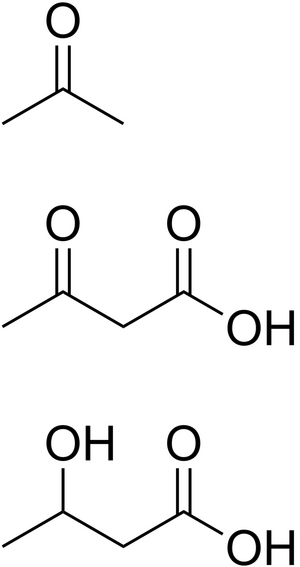Use of ketones
Ketones are products of the breakdown of fatty acids under certain metabolic conditions (e.g. starvation). Ketones include acetoacetate, beta-hydroxybutyrate, and acetone. They are created only in the liver and are used by extrahepatic tissues as a temporary source of energy.
Chemical processes[edit | edit source]
Ketones are polar and are therefore freely transported in the plasma. Their utilization occurs only extrahepatically, because hepatocytes do not contain the enzyme required for their activation. First, β-hydroxybutyrate is oxidized to acetoacetate , which is subsequently activated by the transfer of coenzyme A from succinyl~CoA . Acetocetyl~CoA is converted to AcCoA (part of β-oxidation, catalyzed by thiolase), which enters the Krebs cycle.
Use of ketones by individual organs[edit | edit source]
Cardiac muscle, skeletal muscle and renal cortex prefer ketone oxidation over glucose oxidation. During starvation, the brain adapts to the burning of ketones - during long-term starvation, up to 50 % of its energy requirements are covered by the oxidation of ketones.

